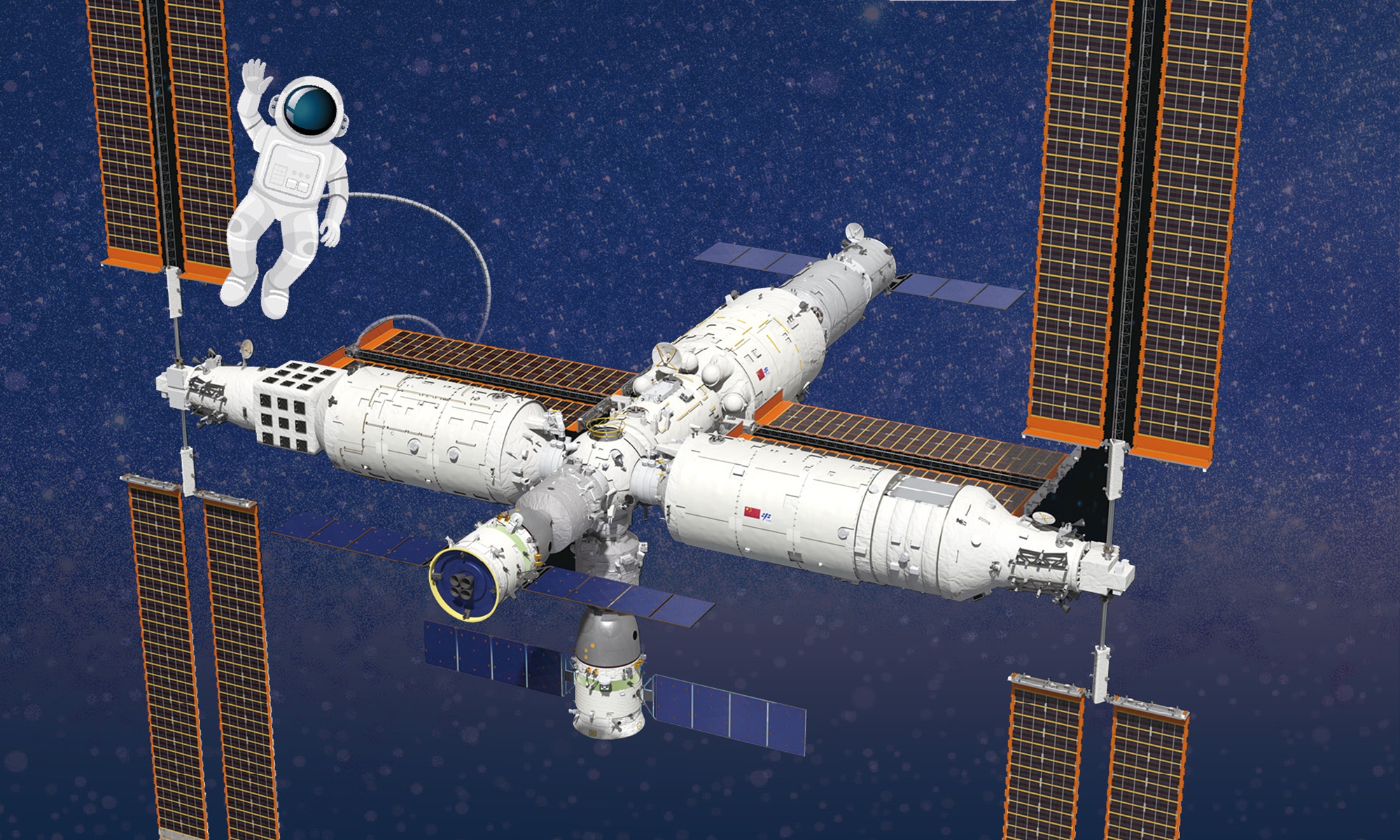SCI-TECH / AIR & SPACE
China to search for habitable planets beyond solar system

China Space Station
China is planning on a quest beyond the solar system to find habitable planets, and the first search will be carried out in 2030 upon the completion of a basic type of telescope array, Chinese researchers revealed at this year's China Space Day event.
The plan, called the Miyin program, aims to detect "another Earth" among near neighbors of the solar system through the launching of a telescope array. It will also carry out high-resolution imaging and spectroscopic observations of various types of objects to map the water composition of the solar system, opening a new era of high-resolution astronomical observation, Zhang Xuhui, executive vice president of the China Academy of Aerospace Science and Technology Innovation, noted at the event.
"The Miyin program is ambitious and significant, but it is still in the technology development phase. In the future, we will advance its maturity through a series of flight tests while making scientific discoveries along the way," Zhang said.
An experimental satellite will be launched to carry out in-orbit tests in 2024, so as to solidify the technology foundation for core technology experimental satellites.
By 2025, optical interference technology experiments will be carried out onboard the China Space Station.
The next year will see the launch of a core technology experimental satellite, which is expected to realize spatially distributed optical interference detection for the first time, thus demonstrating and verifying the core technology of the Miyin program.
By 2030, the basic type of the telescope array will be completed, and optical interference imaging will be achieved. Then the search for habitable exoplanets will begin, Zhang noted.
The Miyin program will complement deep-space exploration and carry out precise measurements of solar system objects, revealing the characteristics of the solar system and planetary systems.
It will also map the morphology and physical properties of solar system objects, map the distribution of solar system molecular components, especially water, and reveal the origin and dynamics of the system and the evolution of chemical composition. It will also explore the formation process of habitable conditions of the Earth and the origin of life.

